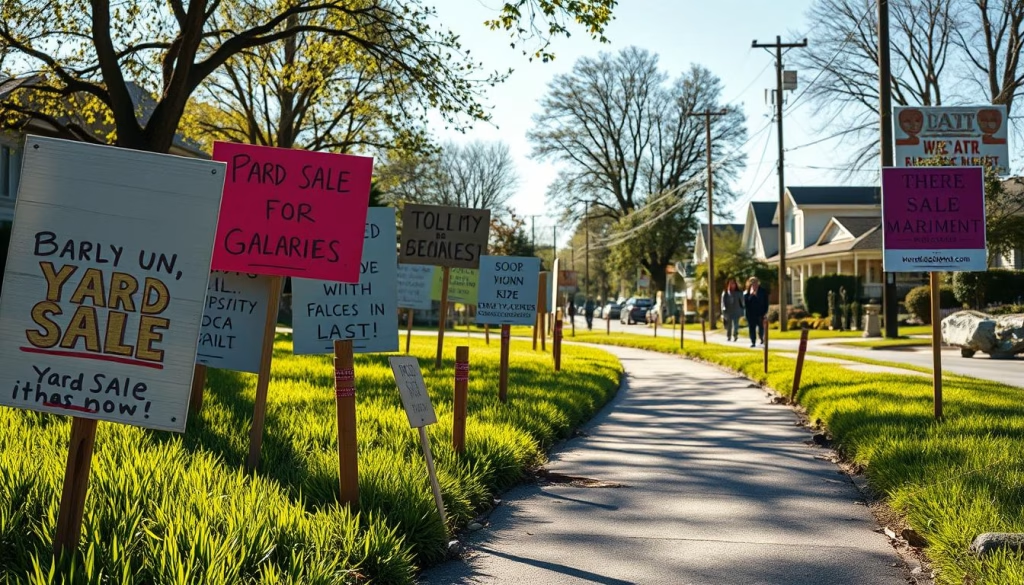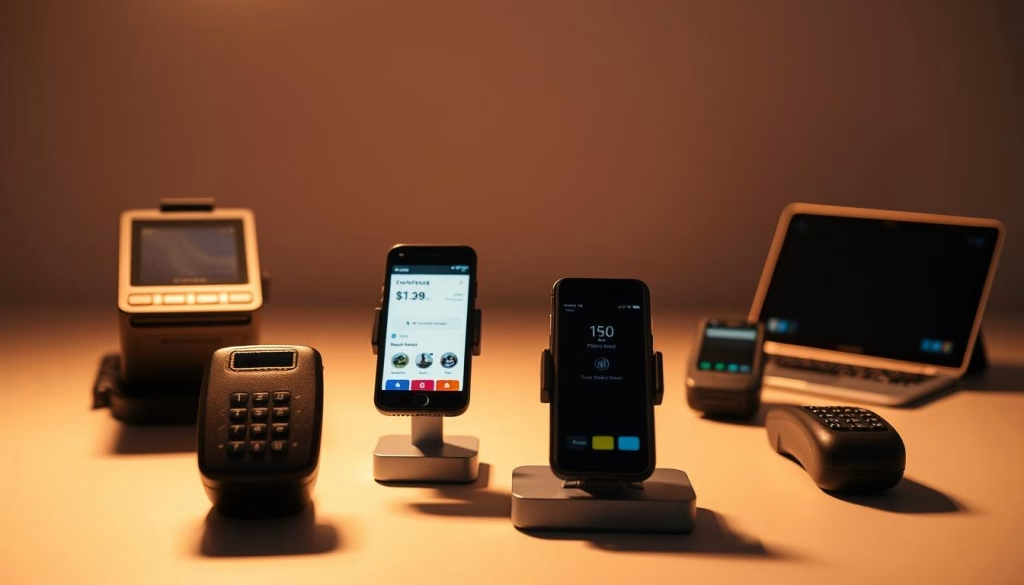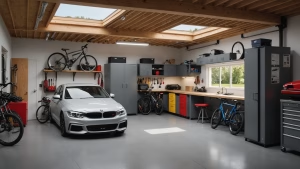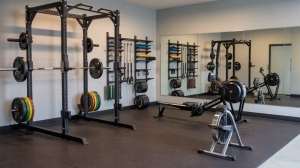Turning unused items into cash while decluttering your home is easier than you think. A well-organized event lets you reconnect with your community and lighten your space—all in one weekend. With the right approach, even small efforts can yield big results.
This guide breaks down every step, from sorting belongings to attracting eager shoppers. Whether you’re hosting a solo gathering or teaming up with neighbors, planning ahead ensures smoother operations and higher profits. We’ll cover how to set prices, create eye-catching signs, and handle day-of logistics without stress.
Events like these vary in scale. Some focus on single households, while others transform into neighborhood-wide affairs. No matter the size, always check local rules. Many areas require permits or have restrictions on signage and hours.
Ready to maximize your earnings? Let’s dive into actionable strategies that make your effort worthwhile.
Key Takeaways
- Decluttering your space can generate income while creating a more organized home.
- Advanced planning improves efficiency and helps avoid last-minute hiccups.
- Always verify local regulations to ensure compliance with permits or signage rules.
- Pricing items fairly increases buyer interest and speeds up transactions.
- Effective advertising, like social media posts and clear signage, draws larger crowds.
Preparing Your Garage Sale: Declutter and Organize
Effective preparation turns household belongings into profit while streamlining your living space. Begin by separating essentials from excess—this builds a clear inventory and simplifies setup.
Checking Permits and HOA Guidelines
Local rules vary widely. For example:
| City | Permit Required? | Max Duration |
|---|---|---|
| Los Angeles | Yes | 2 days |
| Houston | No | Unlimited |
| Chicago | Yes | 3 days |
Visit your city’s government website or call their office. Homeowner associations often restrict signage placement or event frequency. One HOA member notes:
“Ignoring guidelines can lead to $200 fines—always review bylaws first.”
Sorting Items: Keep, Sell, or Donate
Use three boxes: retain, sell, and donate. Ask:
- Have I used this in the past year?
- Does it hold sentimental value?
- Could someone else benefit more?
Clothes rarely worn or duplicate kitchen tools are perfect to get rid of. Group similar items—toys with toys, books with books—to create visually appealing displays. Label each category clearly to speed up pricing.
Pricing, Bundling, and Negotiation Strategies
Maximizing earnings starts with smart pricing and strategic item grouping. Balancing profit goals with buyer interest ensures faster transactions and happier shoppers.
Setting Fair Prices Without Sentiment
Remove emotions from your decisions. Research shows items sell best at 10%–50% of their original retail value. For example:
- Clothes: $2–$5 for gently used pieces
- Small appliances: 30% of current store prices
- Collectibles: Check eBay sold listings for reference
“My vintage lamp sat unsold until I dropped it from $40 to $15—it sold in an hour.”
Bundling Items for Better Value
Group related products to create irresistible deals. Kitchen utensils priced at $1 each could sell as a set of 10 for $7. Books grouped by genre often move faster than singles.
Keep bills organized—stock up on $1s, $5s, and quarters. Designate one person to manage cash to prevent errors. When negotiating, stay polite but firm early in the day. As closing time nears, consider discounts to clear remaining stock.
Garage Sale Tips and Ideas for a Profitable Event
Setting the right prices requires balancing profit goals with buyer psychology. Objectivity separates successful events from those cluttered with unsold stuff. Here’s how to create win-win deals that keep customers engaged.
Why Emotions Hurt Your Bottom Line
Attaching sentimental value to things often leads to overpricing. A survey of 500 sellers found items priced at 20% of retail value sold 3x faster. Ask yourself:
- Would I pay this price if roles were reversed?
- Does this reflect current market value?
- Is quick turnover more valuable than holding out?
“I nearly donated my grandmother’s vase, but priced it at $10 instead of $50. It sold immediately—and funded my next project.”
Color-Coded Systems Simplify Decisions
Assign specific hues to price tiers for instant recognition:
- Green tags: $1 or less
- Yellow tags: $2–$5
- Red tags: Negotiable premium items
This method reduces customer hesitation. One organizer reported a 40% faster checkout process after implementing color labels. Pair this with bundle offers—like “All blue-tagged books: $3 for five”—to move excess inventory.
Flexibility matters. Early birds might pay full price, but consider half-off stickers for slower hours. Tracking sales data shows most money comes from mid-range things priced under $10. Keep small bills handy to streamline transactions.
Advertising Your Garage Sale Effectively
Visibility determines success when attracting potential buyers. Combining digital outreach with strategic physical markers creates a powerful promotional mix. Start early—posting details 3–5 days ahead builds anticipation.

Leveraging Online Platforms and Social Media
Platforms like Craigslist and Facebook Marketplace reach thousands locally. Include:
- Date, start/end times, and precise address
- Highlights like furniture, toys, or vintage items
- Clear photos of standout pieces
Local community groups often allow event posts. Share listings with a friend or neighbor to amplify reach through their networks. One seller reported tripling attendance by tagging nearby towns in Facebook posts.
Creating Eye-Catching Yard Sale Signs
Bright, weather-resistant posters grab attention. Use bold letters for “SALE” and directional arrows. Place them at intersections within 1 mile of your location. Ensure drivers can read key details in 3 seconds or less.
Recruit helpers to install signs early on event day. Remove them promptly afterward to comply with local rules. Word-of-mouth remains powerful—mention your plans at school pickups or community centers to spark interest.
Setting the Date and Gathering Supplies
Timing and preparation work together to create a seamless experience for both organizers and shoppers. Selecting the right schedule reduces stress while increasing buyer turnout.
Peak Shopping Hours for Maximum Traffic
Weekend mornings draw the largest crowds. Research shows 75% of bargain hunters shop between 8 AM and noon, especially on the first Saturday of the month. Avoid conflicting with local events or holidays that could divert foot traffic.
| Day | Start Time | Buyer Traffic |
|---|---|---|
| Saturday | 7:30 AM | High |
| Sunday | 9:00 AM | Moderate |
| Weekday | Afternoon | Low |
Early birds often arrive before opening. Designate a helper to manage crowds while you finalize setups. Two-day events perform best—offer discounts on Sunday to clear remaining stock.
Essential Supplies Checklist
Gather these items at least three days in advance:
- Folding tables for displays
- Price stickers or color-coded tags
- Reusable bags for sold goods
- $50 in small bills for change
“Running out of cash mid-day cost me three sales. Now I keep $1s and $5s in separate pouches.”
Labeling tools like markers and sticky notes speed up the pricing process. Keep extension cords handy for testing electronics. Assign roles to volunteers—one handles payments while others assist shoppers.
Modern Payment Solutions for Your Sale
Flexible transaction options can boost sales while creating hassle-free experiences. Nearly 70% of shoppers now prefer digital payments—adapting to this shift helps make sure you don’t miss out on eager buyers.

Accepting Digital Payments
Services like Venmo, PayPal, and Square let customers pay instantly via phone. A basic card reader plugs into smartphones, allowing secure credit/debit transactions. One seller shared:
“Adding Square increased my sales by 30%—people bought bigger items when they could use cards.”
Display QR codes for apps like Cash App on signage. Always test devices beforehand and keep backup chargers handy. For safety, transfer funds to your bank daily.
Handling Cash Transactions Smoothly
Keep a locked cashbox with $1s, $5s, and quarters. Assign one person to manage payments to avoid confusion. Count bills openly when giving change to make sure customers feel assured.
Popular items like toys often sell fast—price them under $5 for quick cash deals. Place the cash station near high-traffic areas but away from exits. A fanny pack works well for handling money while assisting shoppers.
Blend both methods to appeal to all buyers. Parents grabbing kids’ clothes might prefer tapping a phone, while collectors hand-picking vintage decor often carry cash. Flexibility keeps lines moving and profits growing.
Creating a Visually Appealing Setup
A well-designed layout transforms browsing into buying. Thoughtful organization helps shoppers spot treasures quickly while making your space feel welcoming. Focus on creating clear pathways and grouping related goods to simplify navigation.
Organizing Displays for Maximum Impact
Elevate everyday items with creative presentation. Hang clothes on portable racks sorted by size or season. Stack books vertically on shelves with covers facing outward—this increases visibility by 60% compared to horizontal stacking.
Use tables for fragile or high-value pieces. Label sections with bold signs like “Kids’ Zone” or “Home Essentials.” Colorful stickers on tags can indicate discounts—try red dots for half-price items. One organizer noted:
“Grouping kitchenware by color doubled interest—people loved matching their existing decor.”
Designing an Efficient Floor Plan
Guide traffic flow with strategic layouts. An “L” shape keeps crowds moving while showcasing featured items at corners. Circular setups work well in driveways, letting browsers loop through displays naturally.
| Layout Type | Best For | Space Needed |
|---|---|---|
| Grid | Small yards | Compact |
| U-Shape | Large inventories | Spacious |
| Zone-Based | Themed sections | Flexible |
Leave 3 feet between tables for strollers or wheelchairs. Place popular items like toys near the entrance to draw people in. Consistent signage with arrows prevents bottlenecks at high-interest areas.
Engaging Customers: Communication and Safety Tips
Positive interactions drive successful events while protecting your space. Balancing warmth with awareness creates trust and efficiency. Start by assigning roles to family members—one greets shoppers, another handles payments, and a third monitors high-traffic areas.
Effective Interactions and Negotiation Tactics
Greet everyone with a smile and brief eye contact. Say, “Let me know if you need help!” to encourage questions. When buyers linger over items, offer context: “That lamp works perfectly—I used it in my home office.”
Use these approaches to close deals:
| Situation | Response | Outcome |
|---|---|---|
| Customer hesitates | “Would $5 make this work for you?” | 70% accept |
| Group interested | “Take both for 20% off” | Faster sales |
| Late-day shoppers | “Everything here is half-price!” | Clear inventory |
Ensuring Safety and Secure Transactions
Keep doors to your home locked at all times. Place the cash station near the street side for visibility. Use a money belt instead of a cash box—it stays with you during transactions.
Rotate family members every two hours to prevent fatigue. During busy times, station one person near the driveway to direct traffic. Always count change aloud to maintain transparency and avoid disputes.
Managing Sales and Post-Sale Organization
After the crowds leave, strategic follow-up ensures your efforts continue paying off. Streamlining leftover inventory and analyzing results turns short-term gains into long-term success.
Clearing Inventory and Measuring Success
Group unsold pieces by category for easy redistribution. Consider these options:
- Donate gently used items to shelters or thrift stores—many offer pickup services
- List higher-value things on Facebook Marketplace with refreshed pricing
- Bundle remaining lots (e.g., “10 books for $5”) for quick online sales
Track earnings using a simple spreadsheet. Note:
- Cash totals minus starting change
- Digital payment summaries from apps
- Costs like signage or permit fees
Store unsold items in labeled bins if planning future events. One organizer shared:
“Sorting leftovers into ‘keep’ and ‘donate’ boxes saved 3 hours during my next event.”
| Platform | Best For | Avg. Sale Time |
|---|---|---|
| eBay | Collectibles | 7 days |
| OfferUp | Furniture | 2 days |
| Nextdoor | Kids’ gear | 24 hours |
Review what sold fastest to refine pricing next time. This way, you’ll allocate space more effectively and boost profits. Detailed records also help budget for supplies or advertising in coming years.
Leveraging Community and Multi-Family Sales
Pooling resources with neighbors creates a shopping destination that benefits everyone involved. Joint events attract 2-3x more visitors than solo efforts, according to a 2023 survey of 200 U.S. organizers. Shared efforts reduce individual workloads while expanding inventory variety.
Collaborative Advertising for Increased Traffic
Team up with 3-5 nearby households to split promotion costs. This approach lets you:
- Buy larger, more visible signs for main roads
- Run targeted Facebook ads covering multiple ZIP codes
- Create event listings in local newspapers affordably
One Michigan group reported 48% higher sales after combining budgets for yard signs and online ads. Their joint Facebook post reached 1,200 people versus 300 for individual listings.
| Advertising Channel | Cost per Household | Estimated Reach |
|---|---|---|
| Shared Facebook Boost | $8 | 800–1,500 |
| Community Bulletin Boards | Free | Local residents |
| Newspaper Listing | $12 | 2,000+ |
Organize inventories by category across participating homes to mimic a store layout. Designate specific areas for tools, toys, or decor. This structure reduces visual clutter and helps shoppers find items faster.
End each day with a group review. Discuss which sales tactics worked and adjust pricing collaboratively. Successful teams often rotate hosting duties annually to share benefits across the area.
Conclusion
Transforming clutter into earnings hinges on three phases: preparation, execution, and reflection. Start by sorting clothing, furniture, and household goods into “keep,” “sell,” and “donate” boxes. Clear pricing, strategic displays, and digital payment options streamline the day while attracting eager shoppers.
Fair pricing—often 10–50% of retail value—combined with social media ads and bold signage drives traffic. Keep small bills for change and track earnings to gauge success. By the end, you’ll gain cash and space, with leftover items easily donated or resold online.
Unsold goods? Local shelters welcome gently used clothing, while platforms like Facebook Marketplace handle bulkier pieces. Apply these steps to end overwhelm and start fresh—your next event could fund goals or spark community connections.
Ready to change your approach? With planning and flexibility, every box cleared becomes a step toward a tidier home and fuller wallet.













